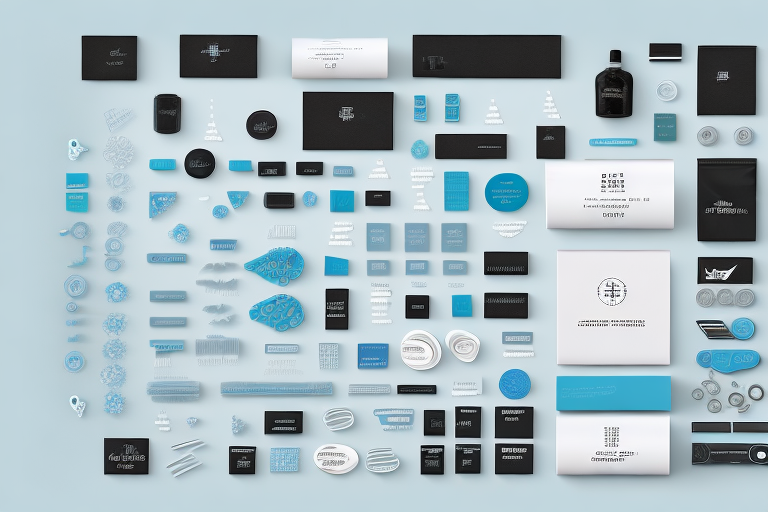Maximizing Your Ecommerce Profits Through Cross Merchandising
Are you an ecommerce business owner looking for innovative strategies to increase profits and expand your customer base? Cross merchandising might be the solution you need. By strategically recommending complementary products to your customers, you can encourage them to purchase more items, thereby boosting your sales and revenue. In this comprehensive guide, we'll explore everything you need to know about cross merchandising—from understanding the basics to implementing effective product bundles. Read on to discover how to leverage this powerful strategy to enhance your ecommerce profits.
Understanding the Basics of Cross Merchandising
Cross merchandising involves promoting complementary products alongside each other to encourage customers to make additional purchases. The primary goal is to introduce customers to products they might not have considered, making their shopping experience more convenient and enjoyable. For instance, if you sell cameras on your ecommerce site, you might cross-merchandise camera bags, tripods, and memory cards alongside them.
One of the key benefits of cross merchandising is increased customer loyalty. By offering a more tailored and satisfying shopping experience, customers are more likely to return to your store. Additionally, effective cross merchandising can differentiate your store from competitors, providing a unique and personalized shopping environment.
However, it's crucial to be strategic when implementing cross merchandising. Only promote products that are genuinely complementary and relevant to each other. Promoting unrelated products can confuse customers and detract from the overall shopping experience. Furthermore, consider the placement of your cross-merchandised products; improper placement can reduce their effectiveness.
The Benefits of Cross Merchandising for Ecommerce Businesses
Cross merchandising offers numerous benefits for ecommerce businesses:
- Boosts Sales: Encouraging customers to buy more items per transaction increases your average order value.
- Introduces New Products: Highlighting complementary products can introduce customers to new items, boosting sales of slower-moving inventory.
- Enhances Customer Satisfaction: Making it easier for customers to find everything they need in one place improves their shopping experience.
- Builds Brand Loyalty: Providing a seamless and personalized shopping experience fosters trust and repeat business.
- Differentiates Your Store: Offering unique product pairings sets your business apart from competitors.
According to a Shopify report, effective cross merchandising can increase your revenue by up to 30%, making it a vital strategy for ecommerce success.
Identifying the Best Products for Cross Merchandising
The success of cross merchandising hinges on selecting the right complementary products. Here are some strategies to identify the best products for cross merchandising on your ecommerce store:
- Analyze Sales Data: Examine your sales data to identify patterns and connections between products. For example, customers who purchase pet grooming brushes may also buy pet shampoo and conditioner.
- Customer Feedback: Use surveys and reviews to understand which products customers frequently use together.
- Product Recommendations: Implement algorithms that suggest products often purchased together.
- Market Research: Study industry trends and competitors to identify popular cross merchandising pairs.
Conducting market research and analyzing industry trends can provide insights into what other successful ecommerce stores are cross merchandising. Refer to reports from Statista or HubSpot for up-to-date market data and trends.
Implementing Cross Merchandising Strategies for Maximum Profitability
Once you've identified the best products for cross merchandising, it's time to implement your strategy. Consider the following approaches:
- Product Bundles: Create pre-packaged bundles of complementary products, making it easier for customers to buy everything they need at once.
- Product Recommendations: Use algorithms and user behavior on your ecommerce site to suggest complementary products to customers.
- In-Store Merchandising: Place complementary products near each other on your website to encourage customers to purchase more.
Regularly evaluate the success of your cross merchandising strategies by analyzing sales data and customer feedback. Tools like Google Analytics can help track the performance of different merchandising techniques. Continuously refine your approach to maximize profitability and improve the overall shopping experience.
Using Customer Data to Personalize Cross Merchandising Recommendations
Personalization is essential for effective cross merchandising. By analyzing customer data and behavior, you can tailor product recommendations to individual preferences and interests. Here are some methods to personalize cross merchandising:
- Track Customer Behavior: Monitor customer searches, click-through rates, and purchase history to make informed merchandising decisions.
- Targeted Email Promotions: Send personalized email campaigns highlighting complementary products based on previous purchases.
- Demographic Analysis: Use customer demographics such as age, gender, and location to make more accurate recommendations.
- Timing Recommendations: Suggest products at the right time, such as recommending phone accessories immediately after a phone purchase.
Personalized recommendations can significantly increase conversion rates. According to a Salesforce study, 76% of consumers expect personalized offers, making customization a critical component of cross merchandising.
A/B Testing and Analyzing the Effectiveness of Your Cross Merchandising Strategies
To ensure the success of your cross merchandising efforts, it's important to test and analyze your strategies regularly. Implement A/B testing to compare different cross merchandising techniques and determine which ones yield the best results. Key metrics to track include:
- Click-Through Rates: Measure how often customers click on recommended products.
- Conversion Rates: Track the percentage of customers who make additional purchases based on recommendations.
- Average Order Value: Monitor changes in the average amount spent per transaction.
Experiment with different product placements to identify the most effective locations for cross merchandising. For example, try placing complementary products next to each other or featuring them prominently on product pages. By analyzing sales data and customer feedback, you can refine your strategies to maximize their impact. Tools like Optimizely can facilitate effective A/B testing and analysis.
Creating Effective Product Bundles for Cross Merchandising
Product bundles can be a powerful cross merchandising strategy when executed correctly. Here are some tips for creating effective product bundles:
- Include Complementary Products: Ensure that the bundled products are frequently purchased together and enhance each other.
- Offer Discounts: Provide a discount or special deal for purchasing the bundle to incentivize customers.
- Keep It Simple: Make sure the bundles are easy to understand with clear packaging and labeling.
- Target the Right Audience: Understand your customers' needs and preferences to create appealing bundles.
Regularly review and update your product bundles to keep them relevant and appealing. As customer preferences and market trends evolve, so should your bundling strategies. For additional insights, refer to Forbes on effective bundling techniques.
Leveraging Social Media and Email Marketing to Drive Cross Merchandising Sales
Social media and email marketing are highly effective channels for promoting cross merchandising strategies. Here are some ways to leverage these platforms:
- Targeted Social Media Ads: Highlight complementary products through ads tailored to specific customer segments.
- Personalized Email Campaigns: Send emails that feature product bundles or recommended products based on past purchases.
- Influencer Partnerships: Collaborate with influencers to promote cross-selling in creative ways, expanding your reach.
- Exclusive Promotions: Offer special deals or discounts on bundled products to incentivize purchases.
Promoting product bundles through social media and email marketing can significantly increase visibility and sales. According to a Emarsys report, businesses that effectively use email marketing for cross selling can see up to a 30% increase in revenue.
The Role of Upselling and Cross-Selling in Ecommerce Success
Both upselling and cross-selling are essential strategies for ecommerce success. While cross merchandising focuses on recommending complementary products, upselling encourages customers to purchase a higher-end version of a product they are considering. Together, these strategies can significantly increase your average order value and overall profits.
Effective implementation involves personalized product recommendations, targeted email marketing, and strategic placement of products on your website. By nurturing these strategies, you can create a more robust sales funnel and enhance customer satisfaction.
Common Mistakes to Avoid in Your Cross Merchandising Efforts
While cross merchandising can be highly effective, several common mistakes can undermine its success. Here are some pitfalls to avoid:
- Promoting Unrelated Products: Ensure that all recommended products are truly complementary to avoid confusing customers.
- Overcomplicating Bundles: Keep product bundles simple and easy to understand with clear labeling.
- Ignoring Customer Feedback: Regularly gather and analyze customer feedback to refine your cross merchandising strategies.
- Poor Product Placement: Strategically place complementary products in high-visibility areas to maximize their effectiveness.
- Neglecting Data Analysis: Use data and analytics to inform your cross merchandising decisions and track the performance of your strategies.
Case Studies: Successful Ecommerce Companies Using Cross Merchandising to Increase Profits
Numerous ecommerce companies have successfully implemented cross merchandising strategies to boost their profits. Here are some notable examples:
- Amazon: Utilizes targeted product recommendations and personalized email marketing to encourage cross-selling and upselling, significantly increasing its revenue streams.
- ModCloth: Achieves success with product bundles that include clothing, accessories, and home goods, enhancing the shopping experience and sales.
- Zappos: Effectively cross-merchandises footwear and accessories by showcasing complementary items on product pages, leading to higher average order values.
By following the strategies outlined in this guide and learning from these successful case studies, you can effectively leverage cross merchandising to increase your ecommerce profits and grow your business.
For more insights and advanced strategies on cross merchandising, visit our blog or contact our team at ShipScience.




















